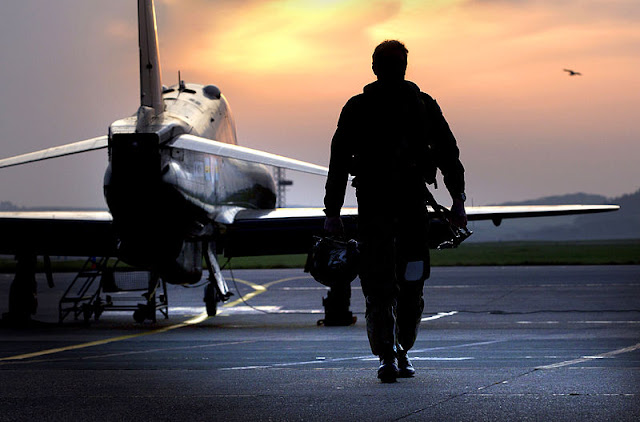In
every aspect of life, be it personal or professional, a sleek review or revisit
of the various phases are very important as that helps you to consider various
factors in terms of quality or quantity. Quality and Quantity are two pivotal
determinants of how you assess your life. The same thing applies when you are
assessing your flight life and you have to consider all factors either
qualitatively or quantitatively, and this eventually brings out a big part of
your personality and your ways of thinking.
For
instance, majority pilots would analyze their flight life in terms of the
number of hours and the variations of aircraft models that they have flown
with. This is, however, mostly the quantitative benchmark that shows just one
side of a pilot's professional life. It doesn't give you a clear idea about the
person's personality or their attitude towards their profession.
However,
assessing your flight life qualitatively is tough as it depends a lot on your
learning and training that actually prepares you for a bright future as a
pilot. It is always better to assess yourself qualitatively, as that lets you
have a clear idea about how much you have actually learned and how you have
applied your learning throughout your career as a pilot.
For
a trained and seasoned pilot, each flight goes into varying categories and each
experience counts a lot. In every case, your training and the skills to avert
troublesome situations or equipment malfunction play a crucial role. For
instance managing the aircraft performance depends greatly on the designing in
reference to aerodynamics as well as the various environmental effects and
influences that impact the capabilities of the aircraft to perform. This way an
aircraft performance is important and you should have a prior idea about
aviation standards in relation to takeoff speed, stall speed including
manageable load and numerous other maneuvers. These factors determine the
safety factor during a flight. It is important to understand that making any
modification to an aircraft structure might affect its performance adversely.
The
atmospheric features like humidity, temperature, density, and pressure have a
crucial role to play in modifying the efficiency of the engine of the aircraft,
thereby, affecting the performance of the aircraft. To understand the
connection between aircraft's performance and the role of atmospheric factors
you should know about the association of air temperature and pressure with air
density. These are few things that only a proper and all inclusive training can
teach you about. To be better prepared in this field you will need a more
extensive course.
Troubleshooting
EGT system and aircraft tachometers
system are two important factors that only an extensive training curriculum can
give you. The troubleshooting situations help you to manage situations during
flights when your trainer is not with you. During troubleshooting EGT system, the
analyzer is deployed to indicate the problem initially. This is greatly helpful
in troubleshooting the thermocouples in the aircraft. This system further helps
with systematic maintenance.
There
are various situations resulting in different kinds of problem where EGT
troubleshooting is required. Having a thorough training can prepare you for
each and every kind of situation. Troubleshooting aircraft tachometers requires you to use RPM check system or
circuit that's present in the analyzer and does engine speed reading at an engine
run-up time, featuring an accuracy of ±0.1%.
The
tachometer system, including the instrument cable, delivers connections for RPM
check. The connections should be made with tachometer system and RPM check
circuit analyzer. They can be identified as a common parallel circuit as the engine
is run-up depending on technical instructions. If reading difference goes
beyond the tolerance level, then the engine has to be stopped so that the
problem can be corrected in time.
So
this is how both quality and quantity matters!
Resource: https://goo.gl/FmhZpC

Comments
Post a Comment